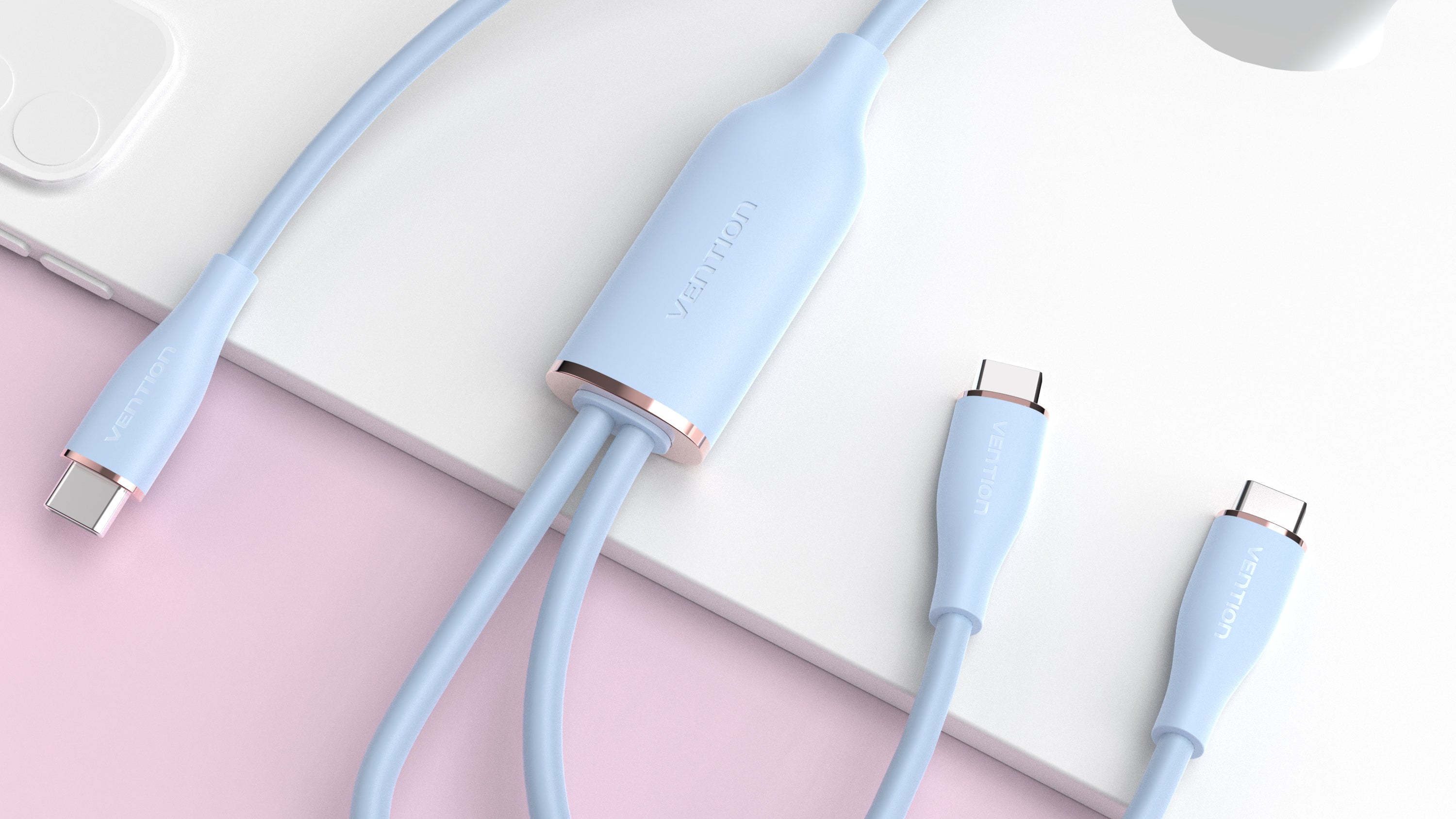A 2-in-1 charging cable is integrated with 2 USB type c charging cables to charge two devices simultaneously. Of course, both devices (it could be a tablet and an android, two tablets, two androids, or other devices) should use USB type c charging cables, meaning you can't use them to charge micro USB devices.
A 2-in-1 USB cable comes with different features and standard speeds depending on the brand and the make you choose. Like other chargers, there are also fast-charging and slow-charging 2-in-1 USB cables. You, therefore, need to be knowledgeable about the different types and the specs to purchase the best. Luckily, here's a guide to help you select the best 2-in-1 USB cable:
What is a USB cable?
A USB cable or a Universal Serial Bus is designed to connect electronic devices via the USB protocol. There are many uses for these cables, including the following:
- Connecting PCs to input and output devices such as a mouse, keyboard, headphones, speaker, adapter, and other accessories.
- Transferring data from one device to the other
- Charging different mobile phones, iPhones, and tablets.
USB cables are meant for desktop environments, and their lengths are limited to 5 meters for high-speed and 3 meters for low-speed gadgets.
Using 2-in-1 USB cables
Anyone with an electronic gadget, be it a mobile phone or a tablet, needs a charger to charge their phone regardless of the brand. Usually, the charger is included in the package once you purchase your device. However, the chargers you get in your package usually come with one cable, and to get a 2-in-1 USB, you'll have to go deep into your pocket for some money to purchase your own.
Using a 2-in-1 USB is not different from using other USBs. You plug it into your PC or laptop's USB port (the standard cable connection interface) to transfer data or charge. The only difference is that it comes with multiple cables.
Types of USB cables and connectors
There are various USB cables, each suited for different tasks and gadgets. However, the main USB charging cable people use for their smartphones and tablets is the micro USB (it could be micro USB to USB C or micro USB to USB A). However, the older models don't have a USB A at the end; instead, they only have the plug.
Here are the different types of USB cables:
- USB-A: They're cables used with power outlets and computers. USB-A cable is a common connector at one end of many modern USB charges. You can connect your smartphones, keyboards, and tablets to wall charges or PC for data transfer.
- USB-B: USB-B are rare, and you're likely to find them on large devices like scanners and printers. Most of these connectors are at one end of type A cables. To use them, you connect the type-B end to your scanner and type-A to your computer via the USB port.
- Mini-USB: Mini-USB cables are much smaller connections used to connect mobile phones, tablets, game controllers, cameras, and MP3 players. Back in the day, it was the standard USB for various gadgets before the invention of Micro-USB.
-
Micro-USB: Micro-USB is currently the most used USB cable. However, it's being abandoned as people shift to using type-c cables. These cables are compatible with micro USB devices and can't be used on other devices.
The cable is thinner and tinier than other cables. Most electronic shops and various stores sell Micro-USB of good length at an affordable price. The use of Micro-USB isn't limited to mobile phones and PCs. You can also find them on wireless earphones, Bluetooth speakers, and smartwatches. - USB-C: It's the recent development mostly used on Samsung, Nokia, and Apple devices. They're fast-charging and transfer data at a very high speed. Most devices are now coming with Type-C charging ports. Some have USB-C on one end and Type-A on the other, while some have USB-C on both ends.
Choosing a good USB 2-in-1 cable
There are multiple cables to choose from, whether 2-in-1, 3-in-1, or just a single cable. Some will charge your android faster, while some will be slower. Well, this is because they're designed differently and have different features.
When purchasing your cable, consider the gauge (thickness) of the internal wires. A cable with a lower gauge is more likely to fast-charge your gadget than that with a higher gauge because they don't deliver as much current. However, you should note that fast-charging cables don't necessarily offer quick data transfer. Cables made from quality materials have low gauges. The common gauges include:
- 24WG: Has a lower gauge and thickness, and thus fast charging.
- 28WG:Thinner than the 24WG and has a higher gauge.
Another thing you should consider when buying a charging cable is the length of your cable. Shorter cables are fast charging than the longer ones, but you can also come across some that aren't. Therefore, go for quality and not the price. You may come across one that's cheaper but not effective. For instance, you may find a braided cable has the perfect length, is affordable, and charges your gadget at a fair speed.
Cable tips and tricks
Here are a few tips you should keep in mind when dealing with cables:
- Every device you purchase will have a charging cable included in the box
- Consider the cable's compatibility with your device's standards
- Cheap cables are usually poorly produced and are likely to overheat and cause fires
Conclusion
You can transfer data or charge two devices simultaneously using a 2-in-1 cable. You can find them in most electronic and mobile stores. However, it doesn't guarantee fast charging. You must go the extra mile to identify cables that offer quick data transfer and charging.

